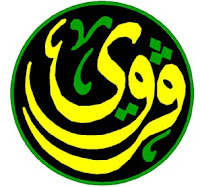Sun, 06 Jan 2008 11:18:52
By Daryoush Bavar, Press TV, Tehran
 Saddam(R) and Donald Rumsfeld |
December 30 marks the first anniversary of the execution of former Iraqi dictator Saddam Hussein. He was sentenced to death by hanging after being convicted of crimes against humanity by the Iraqi Special Tribunal following his trial for the 1982 murder of 148 Iraqi Shias in the town of Dujail.
Saddam was President of Iraq from July 16, 1979 until April 9, 2003, when he was deposed during the 2003 invasion of his country by a US-led force. He was captured by US troops in December 2003 near his hometown of Tikrit.
Saddam faced trial by the Iraqi Special Tribunal for war crimes, crimes against humanity, and genocide. On November 5, 2006, Saddam was sentenced to death. On the 26th of December the court rejected Saddam's appeal of his conviction and death sentence. He was hanged on December 30, 2006.
The former Iraqi dictator, who ran the country under a barbaric rule, was executed at a former military intelligence headquarters in Baghdad's neighborhood of Kazimiyah.
It was an ironic choice of location. During his regime, Saddam had numerous dissidents executed in the facility. At the time of his death, he was in the midst of a second trial, charged with genocide and other crimes for a 1987-88 military crackdown that killed an estimated 180,000 Kurds in northern Iraq. Despite his execution, many believe the court was kept aloof from investigating anything which would disclose how the West, especially the US, had helped build Saddam's Iraq as a buffer or bulwark against Iran.
They argue that Saddam's case was closed prematurely and quickly so as to cover up Washington's help and support for the former Iraqi regime in the 1980s when Saddam invaded Iran and in 1990s when it rolled over into Kuwait.
In mid-September 1980, Saddam invaded Iran. Initially, Iraq advanced far into the Iranian territory. But before long, the war took a different course with Iranian forces pushing back Saddam's invading army. By mid-1982, Iraq was on the defensive. Despite an earlier position that it would remain neuter, in February 1982 Washington removed Iraq from its list of states supporting international terrorism and restored formal relations with Baghdad in November 1984.
Washington's generosity was pouring in even before a 1982 National Security Study Memorandum by US President Ronald Reagan who had instructed a review of America's Middle East policy calling for the US to do whatever necessary to prevent Iraq's defeat in its war with Iran.
In line with the Reagan's administration policy, Washington began providing the regime of Saddam with financial credits, intelligence, weaponry and strategic military support.
On September 20, 1982, the head of US Interests Section in Iraq, William L. Eagleton, Jr. sends a letter to the US Department of Commerce indicating that Iraq's director of agricultural aviation has invited US crop-duster aircraft manufacturers to provide information about helicopters and pilot training (documents available on http://www.gwu.edu.)
This was while, Iran, at that time, was reporting chemical weapons attacks against its forces by Saddam's army.
In November 1983, the US State Department's Bureau of Politico-Military Affairs informed Shultz of credible intelligence confirming Iraq's 'almost daily' use of chemical weapons.
While it had become clear for the US that Iraq was using chemical weapons not only against Iranian soldiers but its own Kurdish population in Dec. 1983, Donald Rumsfeld, then special envoy of President Reagan, met Saddam in Baghdad and discussed common US-Iraqi interests. Rumsfeld ensured Saddam of the US efforts to support Iraq in its war against Iran.
When Iran brought to the UN Human Rights Commission a draft resolution on the use of chemical weapons by Saddam's regime, Washington instructed its representative to the UN to lobby other Western missions for a motion of 'no decision.'
Declassified US documents under the Freedom of Information Act indicated that in a bid to hamper Tehran's efforts to condemn Saddam for gassing Iranian soldiers, US Deputy Assistant Secretary of State James Placke discussed a draft UN resolution on use of chemical weapons with a senior Iraqi official, Nizar Hamdoon, on March 29, 1984. Hamdoon said that Iraq would prefer a Security Council presidential statement to a resolution. Placke informed Hamdoon of the US's intention to agree with the Iraqi suggestion.
Voicing the US tacit approval of the use of chemical weapons, Placke reiterated that Washington 'did not want this issue to dominate' bilateral relationship between Baghdad and Washington.
On March 30, 1984, a day after Placke and Hamdoon's meeting, the Security Council issued a presidential statement condemning the use of chemical weapons, but fails to pinpoint Iraq as the offender. A US State Department memo circulating the draft text observed that, "The statement, by the way contains all three elements Hamdoon wanted."
Critics of Saddam's hasty execution say instead of bringing his case to a local court under the influence of the US occupying forces, it could have been sent to the Hague for an international criminal tribunal where all aspects of his crimes and the support he received profusely by other countries could be examined fairly without any wheel and deal. By not sending Saddam to such a tribunal the international community missed a chance to know about his wars and more importantly his supports.
DB/RE






.gif)





No comments:
Post a Comment